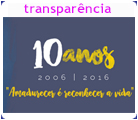1. History
“No one remembers the elderly; they are doomed to die forgotten.”
A desire to address this sentiment prompted Alberto Srur, the proprietor of São Joaquim Participações e Empreendimentos, to contribute to the physical, social and spiritual well-being of mature citizens, close to the completion of his eightieth birthday. He believe that “As important as being remembered after death, is the respect for human beings during their lives.”
From this impulse, on March 17, 2006, a group of professionals involved with elderly care founded the Association São Joaquim for Support of the Mature (the “Association”), a nonprofit organization, grounded on the principles of Salutogenesis, which concerns the forces that contribute to health.
In the initial phase, services were performed in a single room that housed both the reception and the consultation areas. The public started attending the center and based on the demand, activities were proposed, methodologies tested and the number of beneficiaries gradually increased. In 2007, the fitness groups were fully subscribed and the Aldeia house started receiving more elderly persons. In 2013, 620 elderly people are registered.
The intervention started by focusing on the Community Coexistence Center, offering a creative coexistence experience and a series of activities targeting the physical needs and also the psychological and emotional development of the elderly.
The work begins by promoting healthy and active aging by means of creative coexistence experiences and activities such as fitness classes, massages, music, art therapy, embroidery, among others. Many people arrive with depression and other pathologies common to the elderly.
With the activities, parties, creative coexistence experiences and personalized attention focused on the development of the beneficiaries, the organization started learning how to help people of this age group to take ownership of their own lives, to become independent and able to impact the environment surrounding them.
Based on the success of its prior efforts and in order to support growing demand, Association São Joaquim, which assists the elderly since 2006 in Carapicuíba Village, in the State of São Paulo, opened in 2011 the Blue House Community Coexistence Center (Centro de Convivência Casa Azul), located at Estrada João Fasoli, No.701.
Today the management group has a wider understanding of the role of the Association and its social impact: it seeks not only the well-being of all its direct beneficiaries, but also to guarantee the rights and political influence of this segment of the general public.
2. Objective
The goal is to ensure the rights and improve the quality of life of the elderly.
We work to increase the number of elderly who age in a healthful and active manner, who are independent and practice their citizenship and can act as an integrative force in the environment in which they live.
3. Vision, Mission and Values
Vision
Maturity is to recognize life.
Mission
To value, through creative coexistence, the history and development of each human being.
Values
– RESPECT
We tolerate (respect) differences so the affinity can emerge.
– LOVINGNESS
We seek the hearing and perception of the other, showing solidarity in their desires and needs.
– HAPPINESS
We cultivate the forces of lightheartedness, humor and collaboration in all of our actions.
– CRIATIVITY
We believe in the creative potential of free coexistence.
– TRANSPARENCY
We build and protect bonds of trust in our relationships.
– SPIRITUALITY
4. Justification: The cause of the elderly and the issue of aging
The City of Carapicuiba, where both houses of the Association are located, has a population of 369,584 inhabitants and of the total population, 10,339 inhabitants (representing 8.47% of the population) are over the age of 60[1]. The aging index is 33.95%. [CONSIDER INCLUDING A CALCULATION OF HOW THIS INDEX IS MEASURED.] The elderly population grows and demands public policies that guarantee their rights and encourage the exercise of their citizenship.
During the year of 2011, the Social Network of the Elderly (Rede Social da Pessoa Idosa), in which we participate and encourage, conducted a study with 350 elderly persons in order to create a profile of this specific group in the City of Carapicuiba. From the presentation of the profiled group needs and characteristics, the study enabled a dialog between social organizations and the public sector, in different discussion forums.
In the last 7 years focusing on the improvement of the life quality of the elderly, Association São Joaquim, accumulated knowledge on the potential and challenges of working with the elderly.
In light of the scenario that shows a growth of the target public and an increase in the demand for public policies for this segment, the goal is to keep improving the quality of life of the elderly and, at the same time, find ways to expand the methodology to others providing services to this segment in the region.
5. Target Public
The Association provides services to people starting at the age of 55 who live in the City of Carapicuiba, in the State of São Paulo. Our services fall under the category of Activities of Coexistence and Strengthening Bonds, in accordance with Resolution No. 109 of November 11, 2009, with the following description:
“Focuses on the development of activities that contribute to the process of healthy aging, development of independence and sociability, strengthening family bonds, community coexistence and the prevention of social risks. The social intervention should be founded on the characteristics, interests and demands of this age group and consider that group living and experimentation with the arts, culture, sports and leisure and the appreciation of the shared experiences entail privileged forms of expression, interaction and social protection. Should include living experiences that value experiences and stimulate and prioritize the ability to choice and decide.”
6. Programs
6. 1. Blue House Community Coexistence Center Program (Programa Centro de Convivência Casa Azul)
Activities for personal development: physical activities for the body, and artistic to work with feelings and thoughts. E.g.: fitness classes, literacy classes, music, artistic therapy, lectures, parties, outings, coexistence and collaboration.
Upon arrival at the Association, the person goes through a trained receptionist, who fills out the enrolment form and schedules an evaluation of the person’s medical history with a Social Worker. The person’s socio-economic profile is evaluated based on interview information using the Social Worker’s form. People are matched for activities according to the needs identified in the first interview, their age and the results of the socio-economic evaluation. When the elderly presents fragility or any degree of dependency he or she is referred to a different Association Program that targets elderly that have some difficulties in executing daily activities.
See the annex for scheduled events.
7. Methodology
We consider the human being as a whole, as the carrier of an essence that transcends and connects itself with all humanity.
Based on this vision of the human being, the human being starts to loose physical strength around the age of 60. And also, at the same time, if the person finds suitable conditions, the meeting of one’s essence and the possibility of expanded consciousness may occur.
This affirmation is anchored in a tri-membered vision of human beings (Lievegoed, 1994), which sees human beings not only as physical beings with genetic heritage, making human beings capable of developing mental capacities, but also as a being that participates in two worlds, one material and physical and another divine-spiritual, that involves the maturity of consciousness. This cosmic vision of human beings is based in Anthroposophy, which brings a tri-membered comprehension of human beings, composed by three spheres, that must flow and find balance: thinking, feeling and wanting.
|
thinking |
|
feeling |
|
willing |
This philosophy is based on the premise that the physical and spiritual evolution of a human being acts within genetic and biographical potential. The pursuit of meaning for the mature phase of life, seeking to recognize the gains that can be made, is part of the practice, determining the methodology.Further, the activities conducted are based on the principles of Salutogenesis, which refers to the forces that contribute to health, and has as a goal to work with preventative measures to stimulate active and healthy aging.
8. Partnerships
With a registration with the Social Workers Council (Conselho de Assistência Social – CMAS), the Association works for the elderly in the City of Carapicuiba and influences public policies, participating in the creation of the Municipal Law for a Fund for the Elderly. The Association also participates in the Carapicuiba Social Network for the Elderly (Rede Social do Idoso de Carapicuíba) and has representatives on the Elderly Council.
The management team engages in discussions with stakeholders involved with the cause of healthy aging in order to increase the possibility of involving strategic persons to reach their goals. The Association further seeks partners in the private and public sector and relationships with entities with common goals.
The Association has been developing internal capacity to make resources available, including the following accomplishments in the last two years:
• Construction materials for the Blue House Community Coexistence Center Unit
• A van for the transportation of elderly with special needs
• Donation of clothes and objects for the annual sale
• Food in collaboration with the projects Mesa Brasil e Cacau Show
• Financing for projects for two years from the Azzi Institute
• Partnership with the city hall of an unknown period
Others.
9. Biography and Sources
LIEVEGOED, Bernard. Uncovering Growth, Antroposófica (Publisher).
IBGE
Carapicuíba, State of São Paulo, March 2013




